|
|
|
HOME
|
US Navy -
ships
|
US Navy - air
units
|
USMC - air
units
|
International
Navies
|
Weapon Systems
|
Special Reports |
|
Submarine Weapon System BAE Spearfish heavy-weight torpedo |
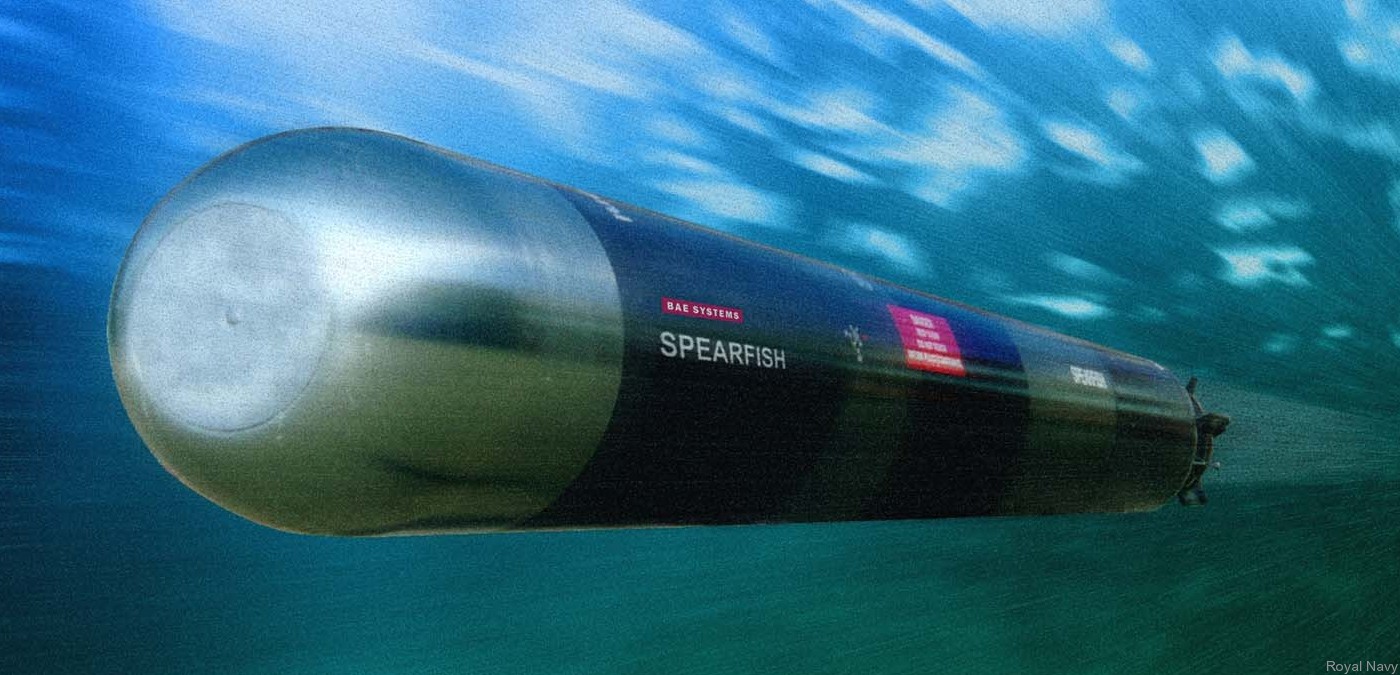 |
| 01/23 |
|
The Spearfish torpedo (formally Naval Staff Target 7525) is the
heavy torpedo used by the submarines of the Royal Navy. It can be
guided by wire or by autonomous active or passive sonar, and
provides both anti-submarine warfare (ASW) and anti-surface ship
warfare (ASuW) capability. Spearfish development began in the 1970s,
with production starting in 1988, and deployment in 1992. By 2004,
they had completely replaced the older Tigerfish torpedo. Design: The torpedo is driven by a pump-jet coupled to a Hamilton Sundstrand 21TP04 gas turbine engine using Otto fuel II and hydroxyl ammonium perchlorate as oxidiser. The addition of an oxidiser improves the specific energy of the fuel by reducing the fuel-richness of the Otto fuel. The Spearfish, which are capable of traveling at 80 knots (150 km/h; 92 mph), were designed to catch high-speed, deep-diving Soviet threats such as the Alfa-class submarine. A microprocessor enables the torpedo to make autonomous tactical decisions during the attack. It has a powerful blast warhead, triggered by either contact detonation (against a submarine hull) or an acoustic proximity fuze (for under-keel detonation against ships). A standoff detonation under the keel enhances blast effects against surface ships through the amplification of stress resulting from the interaction of the explosion's products and the flexible structure of the ship. Guidance: In a typical engagement, Spearfish will run out wire-guided to the general vicinity of the target and then conduct a covert passive search. The high-capacity guide wire system, specifically designed to match the Spearfish's manoeuvre and speed envelope, provides two-way data exchange between the torpedo and launch submarine, maximising the submarine's organic sensor and combat control capabilities. Once at close range the Spearfish uses active sonar to classify and home in on its target. High-power transmissions and sophisticated signal processing enable Spearfish to accurately discriminate targets from background noise and ensure high resistance to acoustic countermeasures and/or evasive manoeuvres. Should Spearfish fail to hit the target on its first attack, it automatically selects an appropriate re-attack mode until it successfully concludes the engagement. Production: The production contract for the Spearfish Torpedo was placed with GEC-Marconi Underwater Systems Ltd (now BAE Systems) in 1983, following a development programme lasting several years. Spearfish entered full production in 1988. Deployment: The first Spearfish were deployed in 1992, with deliveries completed in 2003; the number ordered has not been revealed. Spearfish torpedoes are stored and serviced at Beith Ordnance Storage facility in North Ayrshire. Upgrade: In 2009, an upgrade programme began, leading to further sophisticated advances in Spearfish's homing, warheads, tactical and fuelling systems, as well as an upgraded guidance link. This will last until 2019. On 15 December 2014, the Ministry of Defence awarded BAE Systems a £270 million contract to upgrade the Spearfish torpedo. The upgrade includes a new insensitive-munition warhead from TDW, a change to the fuel system to improve safety, full digitisation of the weapon and a new fibre optic guidance link to improve performance. The upgraded torpedoes will enter service between 2020 and 2024. In February 2021 HMS Talent (S92) test fired 3 upgraded 'Mod.1' specification Spearfish torpedoes as part of their final testing before entry into service with the Royal Navy. Specifications: Type: submarine launched heavy-weight torpedo Manufacturer: BAE Underwater Systems Diameter: 21 in (533 mm) Length: 7 meters (23 feet) Weight: 1850 kg (4080 lb) Range: 29 NMI / 54 km Speed: 80 knots, max. (148 km/h) Propulsion: Otto fuel II + HAP hydroxyl ammonium perchlorate Engine: Sundstrand gas-turbine with pump-jet Guidance System: wire-guided with autonomous active terminal homing sonar Warhead: 300 kg (660 lb) Aluminised PBX explosive Detonation mechanism: proximity or contact detonation In service: 1992-present Platforms: Vanguard class SSBN, Astute class SSN, Trafalgar class SSN source: wikipedia |
| images |
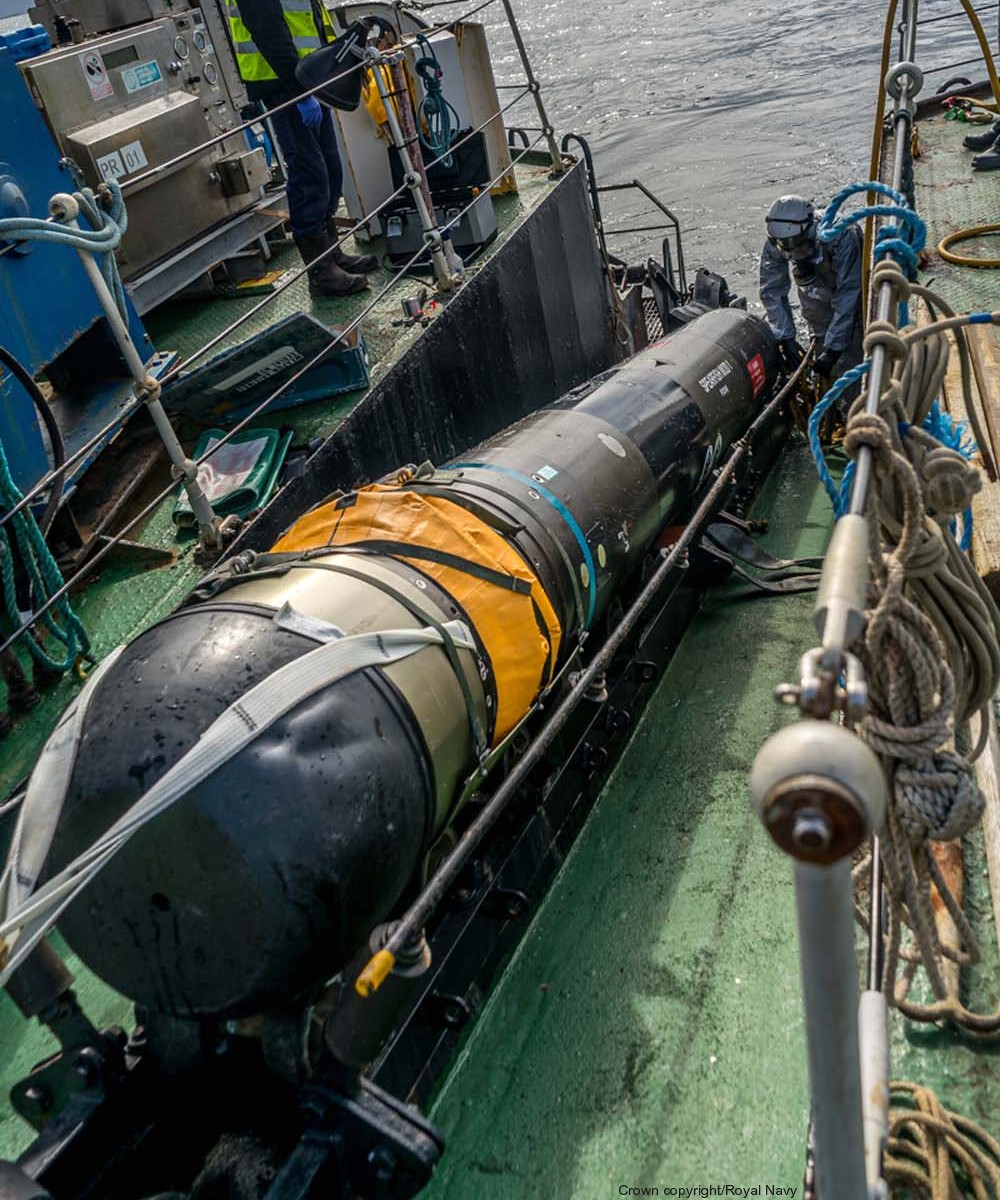 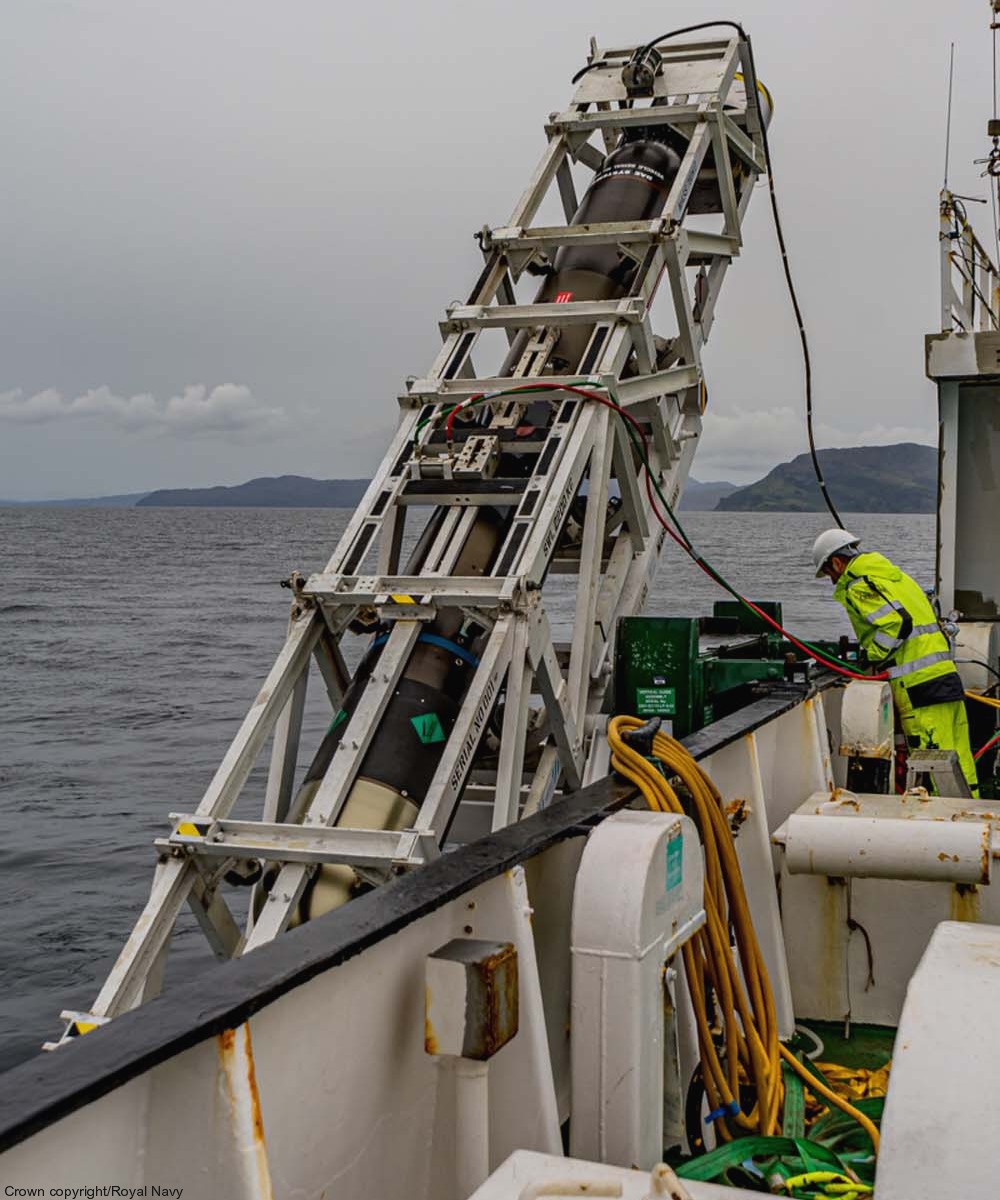 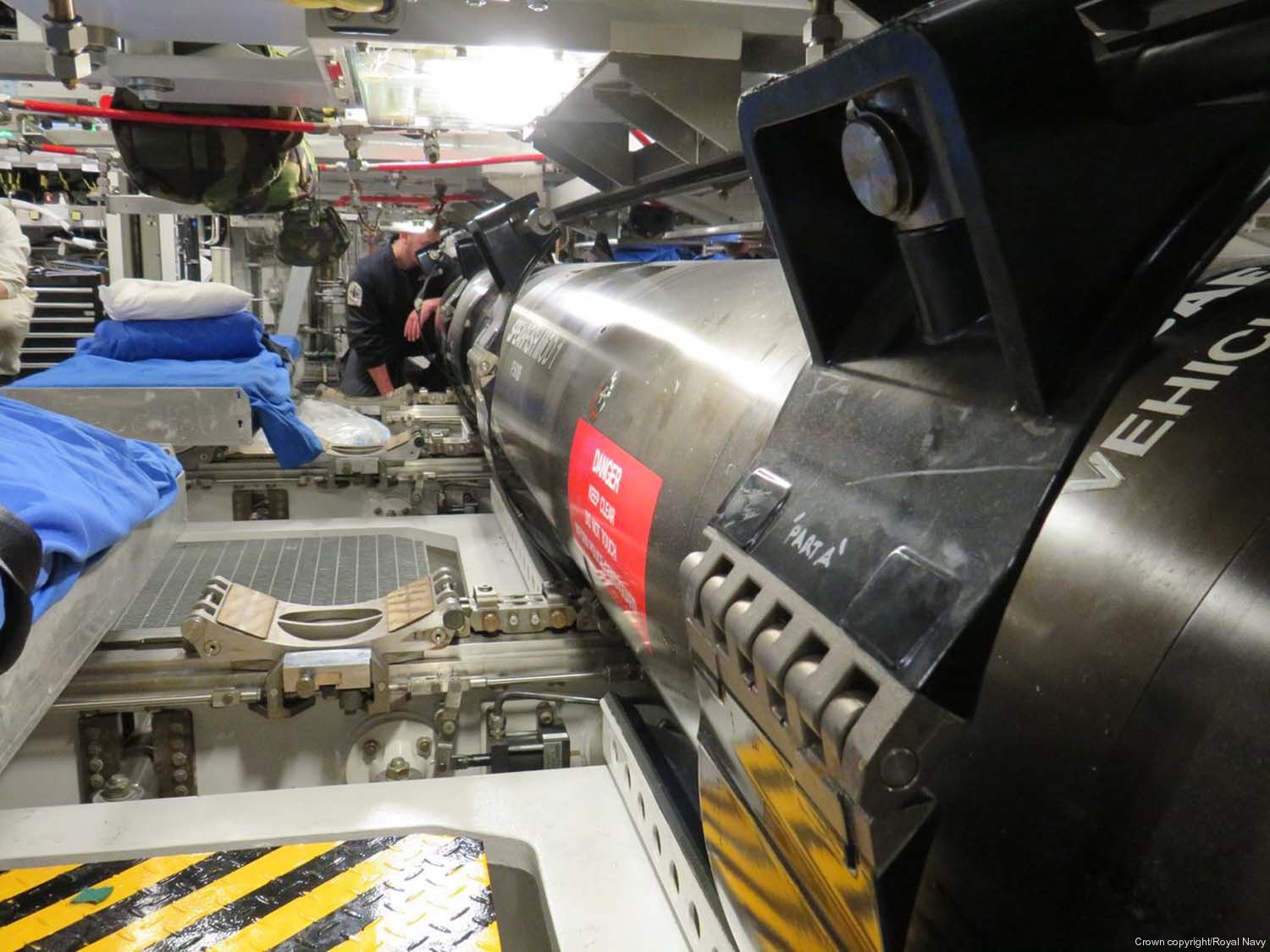 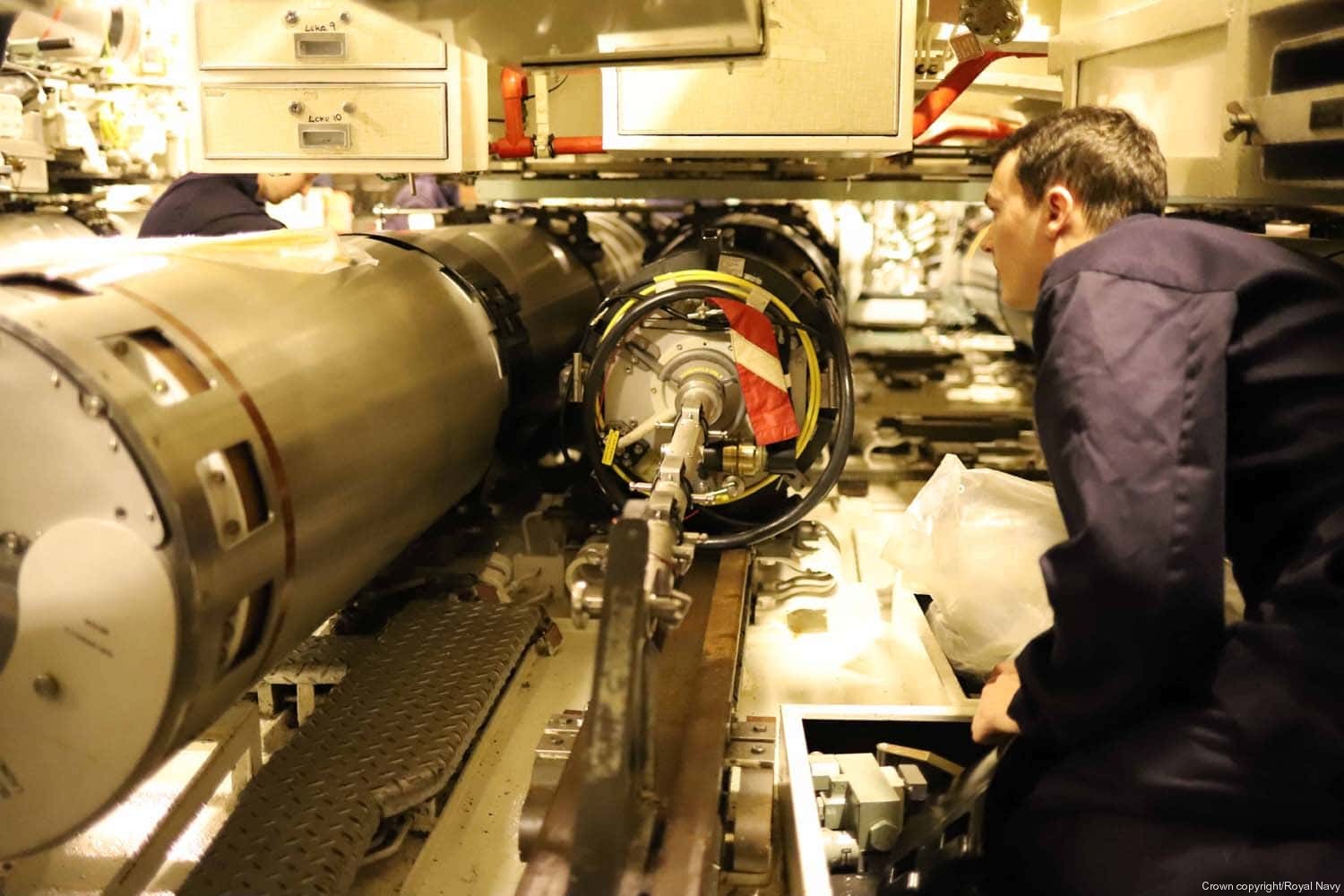 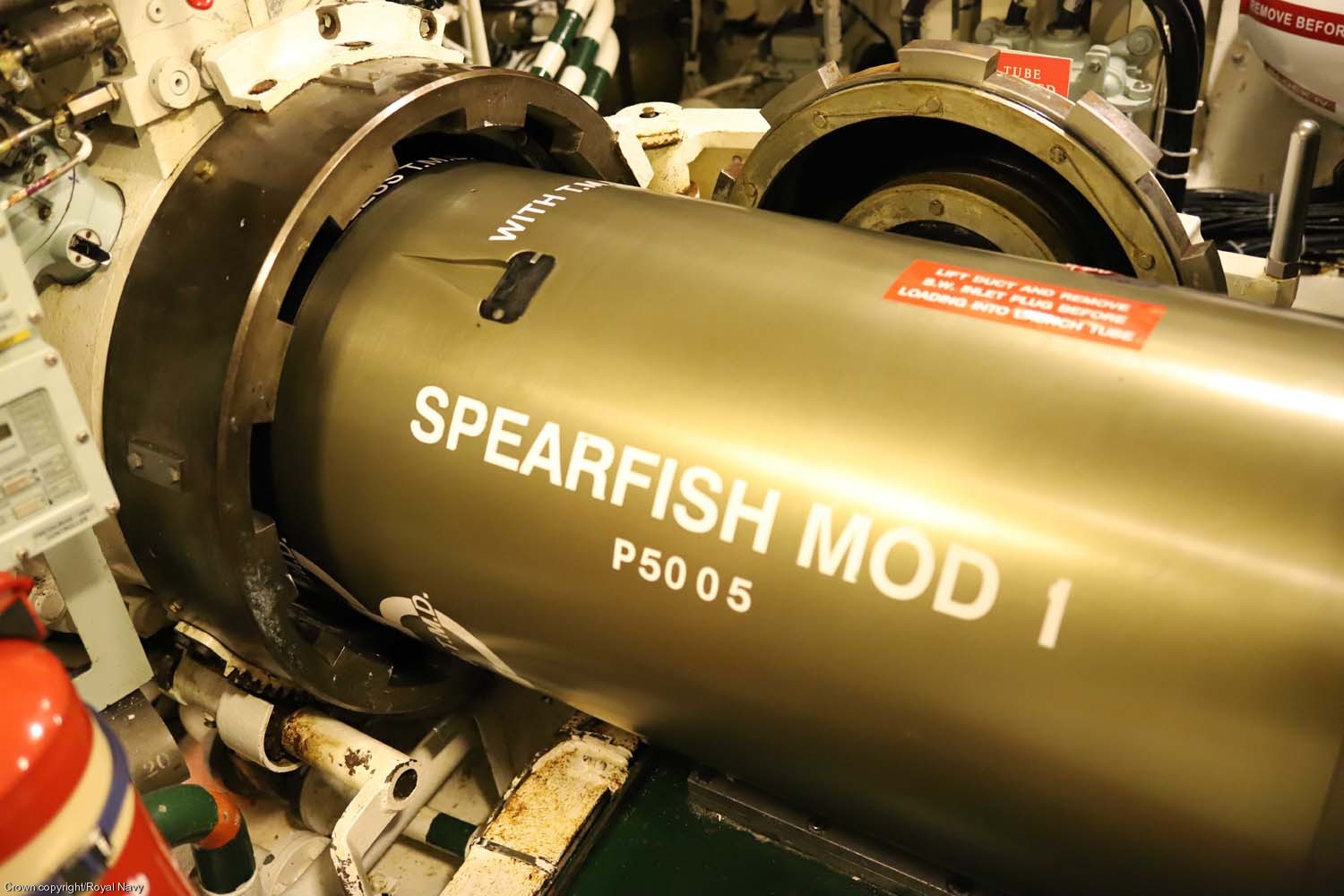 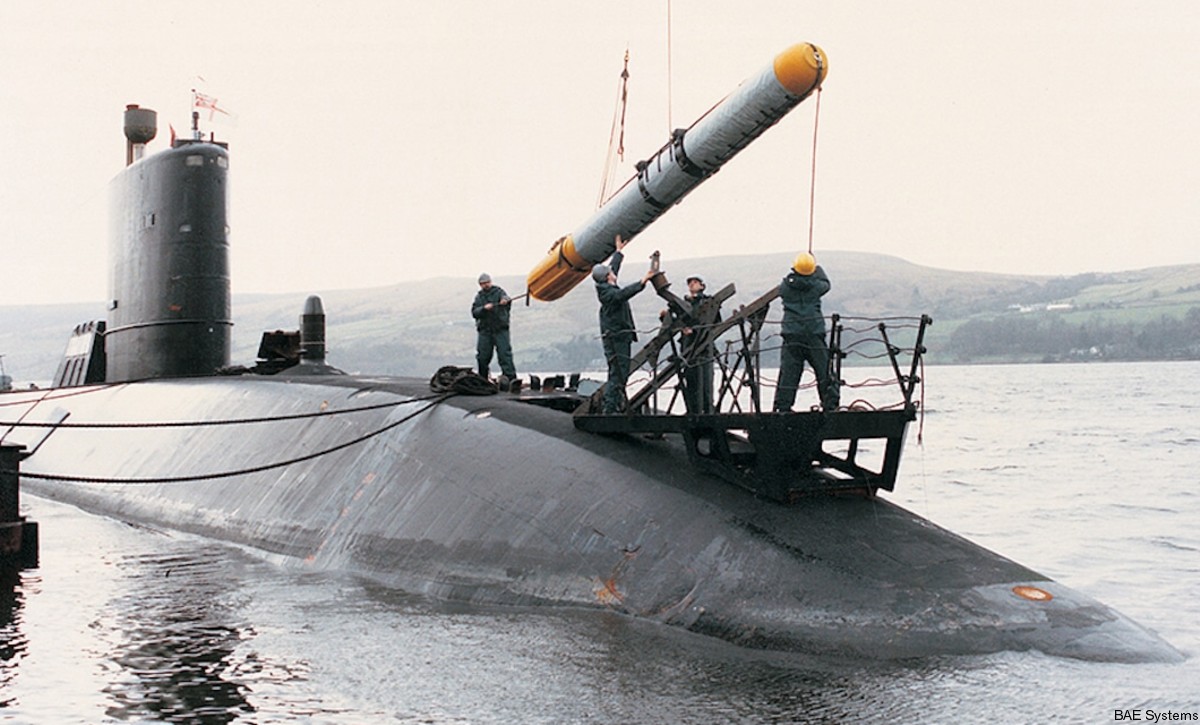 a Spearfish torpedo was loaded into a Trafalgar class SSN 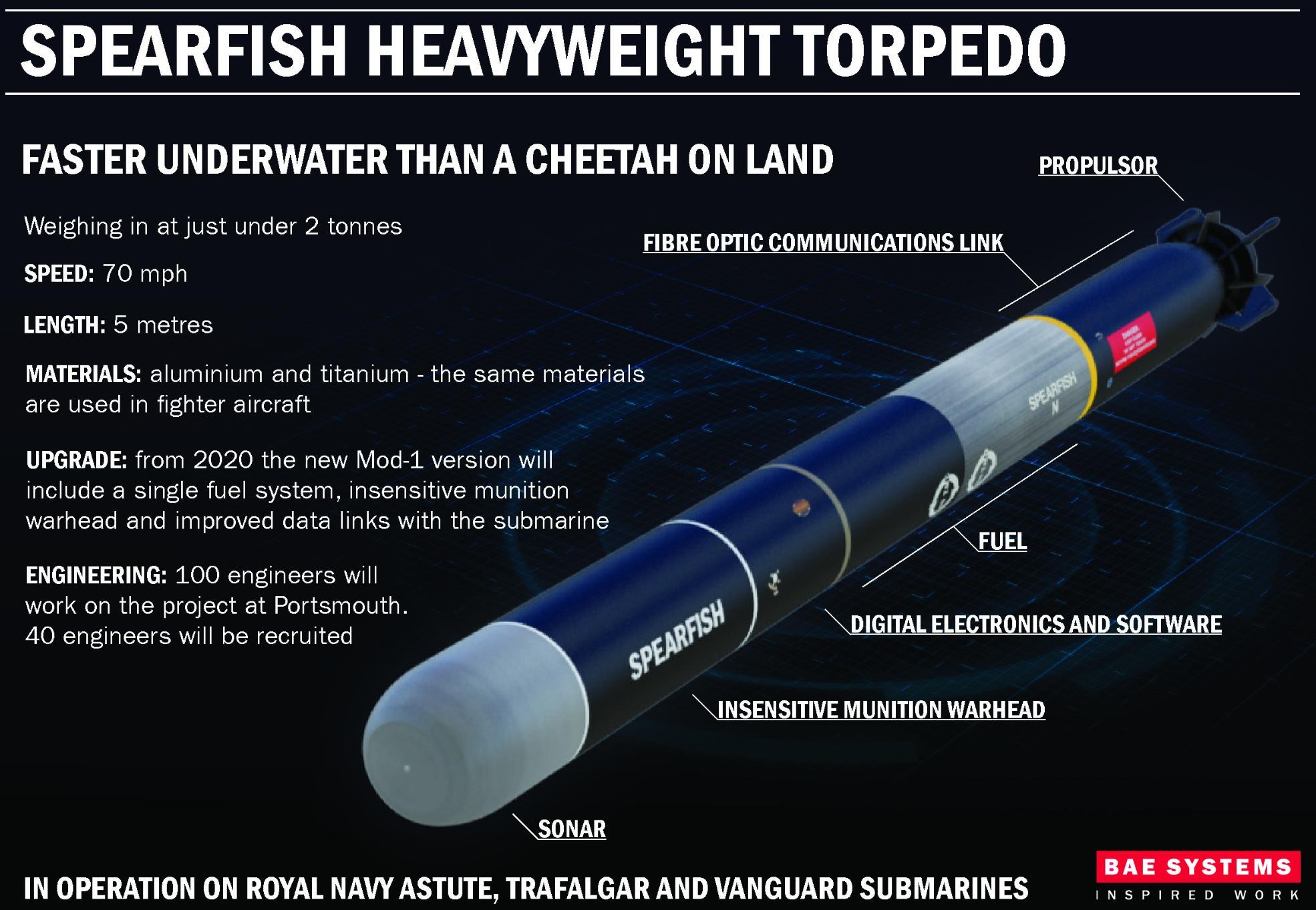  |
|
|
seaforces.org
|
Weapon Systems
start page
| |
